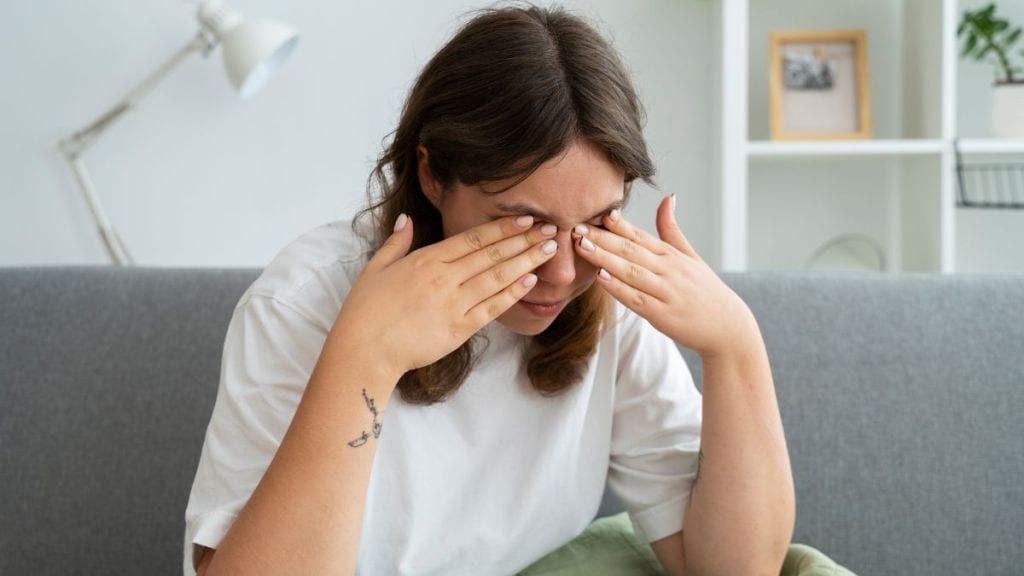Delhi has been waking up to heavy smog for a week now. Delhi’s air quality worsened sharply on Tuesday, slipping from the “very poor” to the “severe” category. According to the Central Pollution Control Board (CPCB), the city’s Air Quality Index (AQI) stood at 423 at 9 am. The Centre has now enforced Stage 3 restrictions under the Graded Response Action Plan (GRAP) across Delhi-NCR, which includes a ban on non-essential construction work.
Air pollution taking a toll on eye health
While much of the focus remains on respiratory and heart health, doctors say that air pollution is also damaging eye health. Dr. Pawan Gupta, Senior Cataract and Retina Surgeon at Eye 7 Hospital, Lajpat Nagar, and Vision Eye Clinic, New Delhi, explained that pollution can cause burning, redness, watery eyes, and even blurred vision.
“Air pollution leads to a burning sensation, watering, red eyes, and blurring of vision. It can also increase cases of dry eyes and allergic reactions,” said Dr. Gupta. He added that harmful gases like nitrogen dioxide (NO2), sulfur dioxide (SO2), and carbon monoxide (CO), along with fine particulate matter (PM2.5 and PM10), can directly contact the eye’s surface.
“These pollutants damage the tear film that protects the eyes, leading to dryness, irritation, and inflammation of the cornea or conjunctiva. Prolonged exposure can even predispose people to eye infections,” he warned.
Children and office-goers at higher risk
According to Dr. Gupta, children and people going to office regularly are especially vulnerable because they spend long hours indoors with poor ventilation. This can cause increased eye fatigue and strain, especially with too much screen time.
To reduce damage, he recommends washing eyes regularly with clean water, using lubricating eye drops, wearing protective glasses when outdoors, and improving indoor air quality with purifiers.
“During highly polluted days, it’s also important to take breaks from screen time and allow your eyes to rest,” he added.
Air pollution may increase risk of myopia and eye disease
According to a study published in Scientific Reports (Nature, 2025), long-term exposure to air pollutants such as PM2.5, carbon monoxide, and nitrogen dioxide is linked to myopia (nearsightedness) in children aged 6–12. Researchers found a clear link between higher pollution exposure and worsening refractive error.
Similarly, a study published in PubMed (2025) reported that adolescents living in areas with high PM2.5 levels showed eye-related issues as compared to those in cleaner environments. This suggests that poor air quality impacts more than just the lungs.
How to protect your eyes during high pollution days?
Experts say residents should treat smog as a serious health hazard, not just a seasonal irritant. Along with using masks and air purifiers to reduce exposure, people should pay attention to eye hygiene.
“Simple precautions can make a big difference, wash your eyes frequently, avoid rubbing them, and stay indoors when the AQI is high,” Dr. Gupta advised.
As Delhi’s AQI remains in the ‘severe’ range, experts urge citizens to take protective measures seriously because pollution isn’t just clouding the skies, it’s also clouding our vision.

